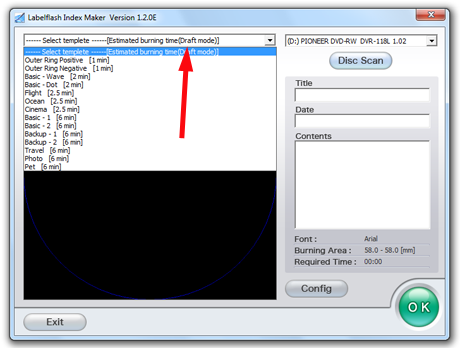

- #LABELFLASH SOFTWARE WINDOWS VISTA PDF#
- #LABELFLASH SOFTWARE WINDOWS VISTA FULL#
- #LABELFLASH SOFTWARE WINDOWS VISTA CODE#
- #LABELFLASH SOFTWARE WINDOWS VISTA WINDOWS 7#
Reorganize, encrypt, annotate, and bookmark PDF documents in NET PDF component suite to create, edit, view, print, Multi-format document-processing component suite for. There are several other requirements you will need to meet. This article deals with just one aspect of Windows Vista/7 application development. You may need an XPS viewer.)Īlthough you may not go for logo certification, you may still find the certification requirements documents listed above very useful.
#LABELFLASH SOFTWARE WINDOWS VISTA WINDOWS 7#
Windows 7 Client Software Logo - Technical Requirements & Program Eligibility (This is an XPS document.Certified for Windows Vista Requirements.Windows Vista Application Development Requirements for User Account Control Compatibility.Inside Windows 7 User Account Control by Mark Russinovich, Technical Fellow, Microsoft.Process Explorer showing security privileges for Internet Explorer instances launched with and without Drop My Rights. In Windows Server 2003 and Windows Server 2008, there are similar restrictions but things are a bit more complex and outside the scope of this article. If your application passes this test in Windows XP, then it will probably run in Windows Vista and Windows 7 without a hitch.

You can use Microsoft's Process Explorer to check the security privileges of an application. You can use the tool to see if your application can run properly under minimum privileges. On my system, I use an utility called Drop My Rights (an unsupported Microsoft utility) to run Internet Explorer and other Internet-enabled applications.
#LABELFLASH SOFTWARE WINDOWS VISTA CODE#
Developers should ensure their code will run with the least privileges. Software publishers should also not ask users to disable UAC or its functionality, as a workaround. Even assuming they were not there, it would not be right for software developers to write applications that took things for granted. However, UAC in Windows Vista and Windows 7 is here to stay. And, it would be long before the entire pantheon of popular Windows applications were rewritten to run under minimum privileges. In fact, they thought this annoyance would force users to dump misbehaving applications and also force developers to create applications that could run under minimum privileges.īut, Windows users and software developers have been spoiled for so long time that overnight such a change of attitude was not going to come. The creators of UAC knew that the security measure would be annoying.
#LABELFLASH SOFTWARE WINDOWS VISTA FULL#
Only if the user permits it, the application is escalated to a higher profile.īut, UAC came in for a lot of criticism from two sections - from people who ran legacy applications that unwisely assumed they had full privileges and from people who never realized or accepted that the fact that UAC was really a necessity and a blessing. When an application requires higher privileges, User Access Control (UAC) kicks in and asks the user permission for elevated privileges. In Windows Vista, applications run under reduced privileges even if they are launched by a user with an administrator account. This ensures that the ill-effects of a compromised application will be limited to the application's demilitarized zone. The main implication of this model is that an application is given only as much privileges it needs to accomplish its job. This security model has similarities with the Security Enhanced Linux model, developed by the National Security Agency (NSA) of the U.S. Realizing this, Microsoft adopted a more tougher security model in Windows Vista. This is the preferred mode of attack for most malware, as an administrator has fewer restrictions than a Power User or a Guest. If an application becomes compromised, malicious code riding on that process can destroy or take over the entire system, as it then has administrator privileges or can be escalated to an administrator profile. So, any application started by an administrator user theoretically has access to the entire system. An application started by a user with an administrator account runs with administrator privileges. In Vista, even administrator accounts run applications under reduced privileges.Īdministrator accounts have access to the entire system. Question: Why do XP applications fail in Vista? Answer: Most accounts in Windows XP are Administrator accounts.


 0 kommentar(er)
0 kommentar(er)
